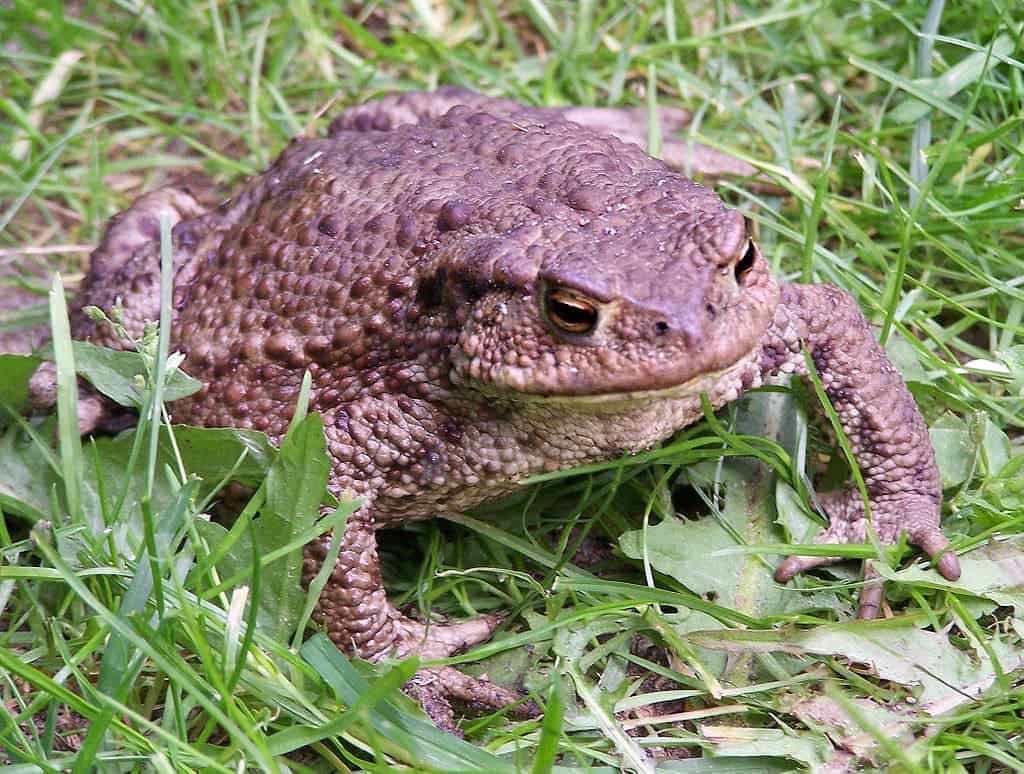A citizen science project looking for dormice and bats has found another more unexpected inhabitant of trees: common toads (Bufo bufo), who until now were believed to be terrestrial. The highest toad in the study was found three meters up a tree, and the researchers believe toads could be venturing even higher in trees, but we just haven’t seen them yet. Which begs the question: why?

A group of volunteers taking part in the National Dormouse Monitoring Program and the Bat Tree Habitat Key Project in the UK have found the toads in nest boxes and tree cavities. Toads are considered typically terrestrial amphibians, spending time on land and in water during breeding, with only a few documented sightings of them in trees.
“This is a really exciting finding, and significant for our understanding of the ecology and conservation of common toads,” Silviu Petrovan, lead author, said in a statement. “We know toads favor woodlands as foraging and wintering habitat, but it appears their association with trees is much more complex than we had previously thought.”
Toads and trees
Common toads live mostly terrestrial lives, normally only hanging out in the water during the breeding season. After breeding, they then hibernate on land. They tend to spend daytime periods under dead wood or large rocks, emerging at night to ambush their prey. Their preference for wooded habitat, especially deciduous woodland, is well known.
Consequently, common toads in the UK have never been surveyed in trees, unlike bats and dormice —which are regularly surveyed in this habitat. Almost all surveys for common toads are done during the breeding time when adults congregate at aquatic sites. Way fewer surveys are done on land as toads can inhabit different habitats.
In their study, the researchers found almost 50 records of common toads’ dormice nest boxes, tree cavities, and even an empty blackbird nest. Of the 400 sites surveyed for dormice, 18 woodland sites had amphibians in nest boxes. And on the 1,400 surveyed for bats, amphibians were found in 20 sites. The study spanned from 2015 to 2019.
Common toads presumably achieve this climbing task by using the fingers and toes to perform sufficient substrate gripping to allow them to climb trees, the researchers suspect. However, why many adult toads climb trees, how long they remain there, and how they select trees with cavities or arboreal nests remains unknown.
The researchers speculate that an arboreal niche might give toads a better chance to survive either as a resting site where predators can be avoided or as novel foraging areas compared to the ground level where they risk being hunted or parasitized. However, the researchers highlighted further research will be needed to better understand this.
While 50 records might not seem a lot, it’s comparable to records of other animals known to use trees regularly – such as blue tits (Cyanistes caeruleus), so the habit may be surprisingly widespread. This also has practical conservation relevance, the researchers said, as toads tend to fall into road drains. This could be solved by installing ladders to escape those traps, and a good climbing ability would be important in this regard.
The study was published in the journal PLOS ONE.


